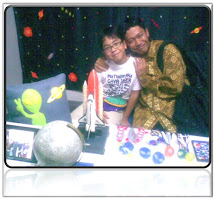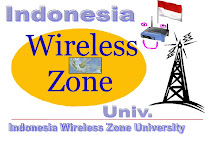Misi ASHU
Written by Quantum Study Club on 18.16Mission statements often contain the following:
- Purpose and aim of the organization
- The organization's primary stakeholders: clients, stockholders, congregation, etc.
- Responsibilities of the organization toward these stakeholders
- Products and services offered
Strategic planning is an organization's process of defining its strategy, or direction, and making decisions on allocating its resources to pursue this strategy, including its capital and people. Various business analysis techniques can be used in strategic planning, including SWOT analysis (Strengths, Weaknesses, Opportunities, and Threats ), PEST analysis (Political, Economic, Social, and Technological), STEER analysis (Socio-cultural, Technological, Economic, Ecological, and Regulatory factors), and EPISTEL (Environment, Political, Informatic, Social, Technological, Economic and Legal).
Strategic planning is the formal consideration of an organization's future course. All strategic planning deals with at least one of three key questions:
- "What do we do?"
- "For whom do we do it?"
- "How do we excel?"
In business strategic planning, the third question is better phrased "How can we beat or avoid competition?". (Bradford and Duncan, page 1).
In many organizations, this is viewed as a process for determining where an organization is going over the next year or more -typically 3 to 5 years, although some extend their vision to 20 years.
In order to determine where it is going, the organization needs to know exactly where it stands, then determine where it wants to go and how it will get there. The resulting document is called the "strategic plan."
It is also true that strategic planning may be a tool for effectively plotting the direction of a company; however, strategic planning itself cannot foretell exactly how the market will evolve and what issues will surface in the coming days in order to plan your organizational strategy. Therefore, strategic innovation and tinkering with the 'strategic plan' have to be a cornerstone strategy for an organization to survive the turbulent business climate.
Vision statements, Mission statements and values
Vision: Defines the desired or intended future state of an organization or enterprise in terms of its fundamental objective and/or strategic direction. Vision is a long term view, sometimes describing how the organization would like the world in which it operates to be. For example a charity working with the poor might have a vision statement which read "A world without poverty"
Mission: Defines the fundamental purpose of an organization or an enterprise, succinctly describing why it exists and what it does to achieve its Vision.
It is sometimes used to set out a 'picture' of the organization in the future. A vision statement provides inspiration, the basis for all the organization's planning. It could answer the question: "Where do we want to go?"
Values: Beliefs that are shared among the stakeholders of an organization. Values drive an organization's culture and priorities.
Strategy: Strategy narrowly defined, means "the art of the general" (from Greek stratigos). A combination of the ends (goals) for which the firm is striving and the means (policies)by which it is seeking to get there.
Organizations sometimes summarize goals and objectives into a mission statement and/or a vision statement. Others begin with a vision and mission and use them to formulate goals and objectives.
While the existence of a shared mission is extremely useful, many strategy specialists question the requirement for a written mission statement. However, there are many models of strategic planning that start with mission statements, so it is useful to examine them here.
- A Mission statement tells you the fundamental purpose of the organization. It defines the customer and the critical processes. It informs you of the desired level of performance.
- A Vision statement outlines what the organization wants to be, or how it wants the world in which it operates to be. It concentrates on the future. It is a source of inspiration. It provides clear decision-making criteria.
An advantage of having a statement is that it creates value for those who get exposed to the statement, and those prospects are managers, employees and sometimes even customers. Statements create a sense of direction and opportunity. They both are an essential part of the strategy-making process.
Many people mistake vision statement for mission statement, and sometimes one is simply used as a longer term version of the other. The Vision should describe why it is important to achieve the Mission. A Vision statement defines the purpose or broader goal for being in existence or in the business and can remain the same for decades if crafted well. A Mission statement is more specific to what the enterprise can achieve itself. Vision should describe what will be achieved in the wider sphere if the organization and others are successful in achieving their individual missions.
A mission statement can resemble a vision statement in a few companies, but that can be a grave mistake. It can confuse people. The mission statement can galvanize the people to achieve defined objectives, even if they are stretch objectives, provided it can be elucidated in SMART (Specific, Measurable, Achievable, Relevant and Time-bound) terms. A mission statement provides a path to realize the vision in line with its values. These statements have a direct bearing on the bottom line and success of the organization.
Which comes first? The mission statement or the vision statement? That depends. If you have a new start up business, new program or plan to re engineer your current services, then the vision will guide the mission statement and the rest of the strategic plan. If you have an established business where the mission is established, then many times, the mission guides the vision statement and the rest of the strategic plan. Either way, you need to know your fundamental purpose - the mission, your current situation in terms of internal resources and capabilities (strengths and/or weaknesses) and external conditions (opportunities and/or threats), and where you want to go - the vision for the future. It's important that you keep the end or desired result in sight from the start.[citation needed] .
Features of an effective vision statement include:
- Clarity and lack of ambiguity
- Vivid and clear picture
- Description of a bright future
- Memorable and engaging wording
- Realistic aspirations
- Alignment with organizational values and culture
To become really effective, an organizational vision statement must (the theory states) become assimilated into the organization's culture. Leaders have the responsibility of communicating the vision regularly, creating narratives that illustrate the vision, acting as role-models by embodying the vision, creating short-term objectives compatible with the vision, and encouraging others to craft their own personal vision compatible with the organization's overall vision. In addition, mission statements need to be subjected to an internal assessment and an external assessment. The internal assessment should focus on how members inside the organization interpret their mission statement. The external assessment — which includes all of the businesses stakeholders — is valuable since it offers a different perspective. These discrepancies between these two assessments can give insight on the organization's mission statement effectiveness.
Another approach to defining Vision and Mission is to pose two questions. Firstly, "What aspirations does the organization have for the world in which it operates and has some influence over?", and following on from this, "What can (and /or does) the organization do or contribute to fulfill those aspirations?". The succinct answer to the first question provides the basis of the Vision Statement. The answer to the second question determines the Mission Statement.
Strategic planning outline
The preparatory phase of a business plan relies on planning. The first chapters of a business plan include Analysis of the Current Situation and Marketing Plan Strategy and Objectives.
Analysis of the current situation - past year
- Business trends analysis
- Market analysis
- Competitive analysis
- Market segmentation
- Marketing-mix
- SWOT analysis
- Positioning - analyzing perceptions
- Sources of information
Marketing plan strategy & objectives - next year
- Marketing strategy
- Desired market segmentation
- Desired marketing-mix
- TOWS-based objectives as a result of the SWOT
- Position & perceptual gaps
- Yearly sales forecast
Methodologies
There are many approaches to strategic planning but typically a three-step process may be used:
- Situation - evaluate the current situation and how it came about.
- Target - define goals and/or objectives (sometimes called ideal state)
- Path - map a possible route to the goals/objectives
One alternative approach is called Draw-See-Think
- Draw - what is the ideal image or the desired end state?
- See - what is today's situation? What is the gap from ideal and why?
- Think - what specific actions must be taken to close the gap between today's situation and the ideal state?
- Plan - what resources are required to execute the activities?
An alternative to the Draw-See-Think approach is called See-Think-Draw
- See - what is today's situation?
- Think - define goals/objectives
- Draw - map a route to achieving the goals/objectives
In other terms strategic planning can be as follows:
- Vision - Define the vision and set a mission statement with hierarchy of goals and objectives
- SWOT - Analysis conducted according to the desired goals
- Formulate - Formulate actions and processes to be taken to attain these goals
- Implement - Implementation of the agreed upon processes
- Control - Monitor and get feedback from implemented processes to fully control the operation
Situational analysis
When developing strategies, analysis of the organization and its environment as it is at the moment and how it may develop in the future, is important. The analysis has to be executed at an internal level as well as an external level to identify all opportunities and threats of the external environment as well as the strengths and weaknesses of the organizations.
There are several factors to assess in the external situation analysis:
- Markets (customers)
- Competition
- Technology
- Supplier markets
- Labor markets
- The economy
- The regulatory environment
It is rare to find all seven of these factors having critical importance. It is also uncommon to find that the first two - markets and competition - are not of critical importance. (Bradford "External Situation - What to Consider")
Analysis of the external environment normally focuses on the customer. Management should be visionary in formulating customer strategy, and should do so by thinking about market environment shifts, how these could impact customer sets, and whether those customer sets are the ones the company wishes to serve.
Analysis of the competitive environment is also performed, many times based on the framework suggested by Michael Porter.
Goals, objectives and targets
Strategic planning is a very important business activity. It is also important in the public sector areas such as education. It is practiced widely informally and formally. Strategic planning and decision processes should end with objectives and a roadmap of ways to achieve them.
One of the core goals when drafting a strategic plan is to develop it in a way that is easily translatable into action plans. Most strategic plans address high level initiatives and over-arching goals, but don’t get articulated (translated) into day-to-day projects and tasks that will be required to achieve the plan. Terminology or word choice, as well as the level a plan is written, are both examples of easy ways to fail at translating your strategic plan in a way that makes sense and is executable to others. Often, plans are filled with conceptual terms which don’t tie into day-to-day realities for the staff expected to carry out the plan.
The following terms have been used in strategic planning: desired end states, plans, policies, goals, objectives, strategies, tactics and actions. Definitions vary, overlap and fail to achieve clarity. The most common of these concepts are specific, time bound statements of intended future results and general and continuing statements of intended future results, which most models refer to as either goals or objectives (sometimes interchangeably).
One model of organizing objectives uses hierarchies. The items listed above may be organized in a hierarchy of means and ends and numbered as follows: Top Rank Objective (TRO), Second Rank Objective, Third Rank Objective, etc. From any rank, the objective in a lower rank answers to the question "How?" and the objective in a higher rank answers to the question "Why?" The exception is the Top Rank Objective (TRO): there is no answer to the "Why?" question. That is how the TRO is defined.
People typically have several goals at the same time. "Goal congruency" refers to how well the goals combine with each other. Does goal A appear compatible with goal B? Do they fit together to form a unified strategy? "Goal hierarchy" consists of the nesting of one or more goals within other goal(s).
One approach recommends having short-term goals, medium-term goals, and long-term goals. In this model, one can expect to attain short-term goals fairly easily: they stand just slightly above one's reach. At the other extreme, long-term goals appear very difficult, almost impossible to attain. Strategic management jargon sometimes refers to "Big Hairy Audacious Goals" (BHAGs) in this context. Using one goal as a stepping-stone to the next involves goal sequencing. A person or group starts by attaining the easy short-term goals, then steps up to the medium-term, then to the long-term goals. Goal sequencing can create a "goal stairway". In an organizational setting, the organization may co-ordinate goals so that they do not conflict with each other. The goals of one part of the organization should mesh compatibly with those of other parts of the organization.
 | Posted in »
| Posted in »



















